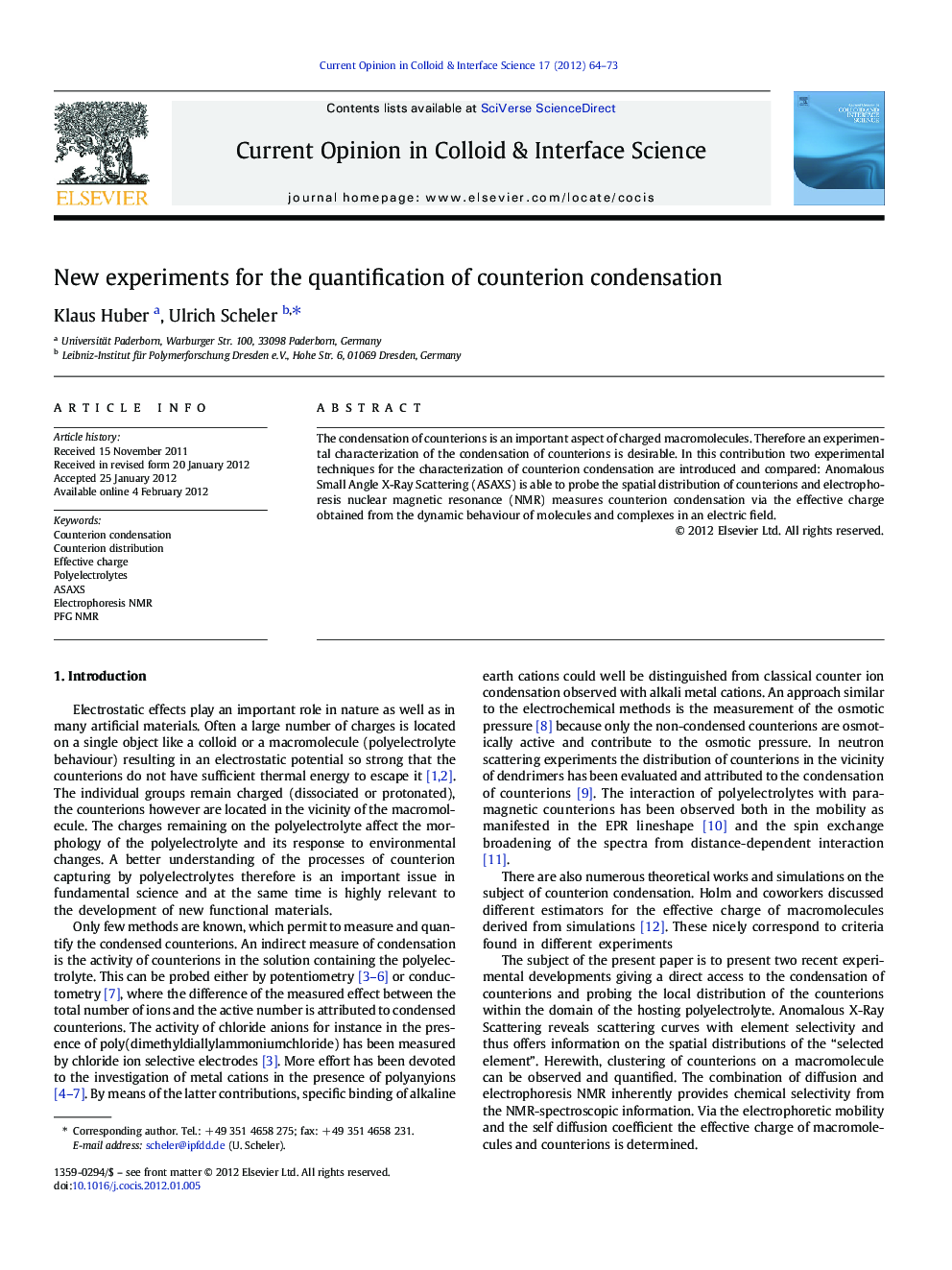| Article ID | Journal | Published Year | Pages | File Type |
|---|---|---|---|---|
| 603439 | Current Opinion in Colloid & Interface Science | 2012 | 10 Pages |
The condensation of counterions is an important aspect of charged macromolecules. Therefore an experimental characterization of the condensation of counterions is desirable. In this contribution two experimental techniques for the characterization of counterion condensation are introduced and compared: Anomalous Small Angle X-Ray Scattering (ASAXS) is able to probe the spatial distribution of counterions and electrophoresis nuclear magnetic resonance (NMR) measures counterion condensation via the effective charge obtained from the dynamic behaviour of molecules and complexes in an electric field.
Graphical abstractFigure optionsDownload full-size imageDownload high-quality image (70 K)Download as PowerPoint slideHighlights► Condensation of counterions reduces the effective charge of highly charged macromolecules ► ASAXS measures the spatial distribution of counterions ► Electrophoresis NMR measures the effective charge via the mobility in an external electric field ► Variations of the type of counterion and of the medium provide further insight
